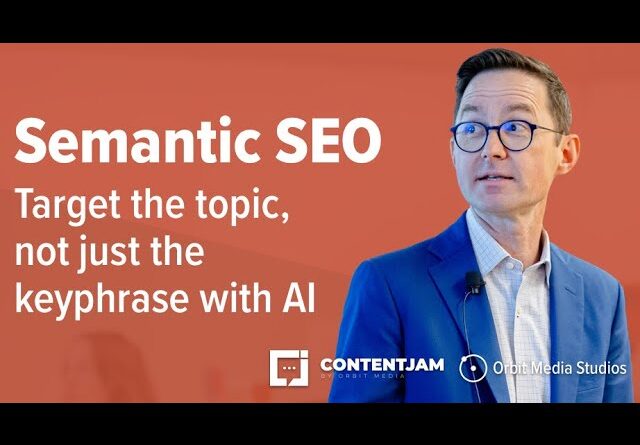
Google isn’t matching words and phrases. It’s a semantic search engine that understands intent through queries and understands meaning through content analysis. It’s matching the searcher with the URLs with the best answers.
Q: So how do you show Google that you are the best answer?
A: Semantic SEO
Your job as a search engine optimizer is to make the best page on the internet for the topic. Yes, you need to indicate relevance (use the primary target keyword in the title, header and body text), but you also need to use the semantic keywords. You need to build in all of the related keywords, answer the related questions, and cover the related subtopics. And you can let generative AI help.
Target the topic, not just the keyphrase.
This video explains the step-by-step process for semantic SEO, starting with identifying semantic keywords (through organic research and paid SEO tools) and then using those in the body of the page (manually and with AI)
0:05 The setup: in this SEO example, we’re a spaceport
0:25 How to indicate relevance for the primary target keyword in the usual ways
1:25 Semantic SEO and using the closely related phrases
1:45 How to find the semantic keywords
2:30 Analysis of the existing page, manually and with an SEO tool
3:25 How to use AI to better understand the audience with persona prompts
5:28 Give AI your semantic keywords and let it suggest SEO copy edits
In the end, you’ve done good SEO copywriting, with help from tools and AI, ultimately making the best page on the web for your topic. It’s that obsession with quality that correlated with rankings in search results pages.
You can get the full post with the detailed step-by-step process here on the Orbit blog…
https://bit.ly/3c4eo4a
#SEO #AI #copywriting #semanticSEO

